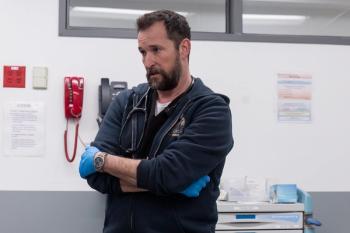
After surge in MRSA infections, hospitals get new guidance
Several medical organizations offer updated recommendations to prevent infections. A key: health systems must utilize better stewardship of antibiotics.
With MRSA infections surging during the COVID-19 pandemic, hospitals are getting new guidelines to reduce infections.
Several medical organizations have developed new guidelines to help prevent MRSA (methicillin-resistant Staphylococcus aureus). The
MRSA infections had dropped for years, but the COVID-19 pandemic erased years of progress. During the pandemic, some infections caused by MRSA rose 41%, according to the Society for Healthcare Epidemiology of America.
Now, healthcare leaders are offering new guidelines to MRSA prevention, updating recommendations developed in 2014.
In a noteworthy change, hospitals are being urged to tighten the use of antimicrobials, including antibiotics.
In the new guidelines, hospitals are advised that avoiding the unnecessary use of antibiotics should now be regarded as an “essential practice,” meaning all hospitals should employ it. Previously, the guidelines suggested the more restricted use of antimicrobials as an “additional practice.”
If patients carrying MRSA are given antibiotics to treat another infection, they could be more likely to develop a MRSA infection and transmit it to others.
David Calfee, senior author of the new guidelines and editor of Infection Control & Hospital Epidemiology, said the recommendations could help reverse the surge of MRSA infections.
“The enormous strain put on healthcare during the pandemic may have contributed to the observed increase in some hospital infections. We have data that show MRSA infections rose,” Calfee said in a statement. “The evidence that informs these recommendations shows that we can be successful in preventing transmission and infection. We can get back to the pre-2020 rates and then do even better.”
Calfee also stressed the importance of proper hygiene in hospitals to reduce the risk of spreading MRSA and other infections.
“Basic infection prevention practices, such as hand hygiene and cleaning and disinfection of the healthcare environment and equipment, remain foundational for preventing MRSA,” Calfee said in the statement. “These fundamental practices help to prevent the spread of other pathogens as well.”
This spring, The Leapfrog Group, which tracks hospital safety, said
Federal officials have said the COVID-19 pandemic
In an
The new MRSA guidelines reflect the most recent guidance in The Compendium, a multi-year series of publications providing recommendations on best practices for healthcare providers.
It’s a collaborative effort led by the Society for Healthcare Epidemiology and includes contributions from the Infectious Diseases Society of America, the Association for Professionals in Infection Control and Epidemiology, the American Hospital Association, and The Joint Commission, along with other organizations and societies.
In this video from a 2022 interview with Chief Healthcare Executive®, Leah Binder of The Leapfrog Group discusses the need for greater attention to patient safety, including some simple steps to protect patients.
“It’s small, mundane things,” Binder said. “It’s not often a big breakthrough in genomics. Those things are interesting to a lot of folks. Washing your hands every time you touch a patient is not quite as interesting. It may not be interesting to them.
“But it is catastrophic to the patient if it’s not done right, each and every time, every minute of the day,” she said.





























































































